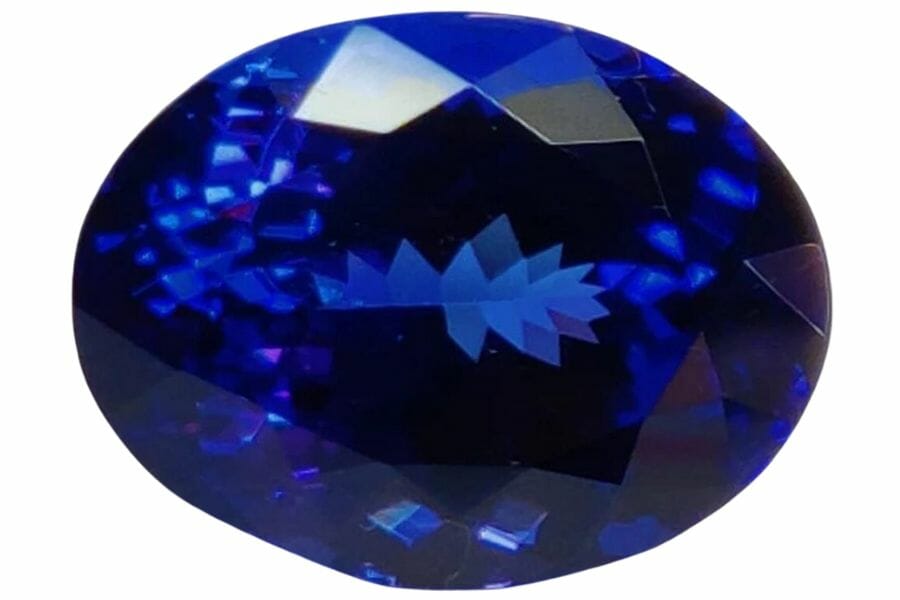While tanzanite and sapphire may seem similar at first glance, there are a lot of differences between these two gemstones. In this guide, you’ll see how to distinguish tanzanite vs sapphire.
You’ll also learn about the fascinating characteristics, uses, values, and histories of these two remarkable gemstones.
Sapphire is often recognized for its brilliant blue color and is one of the most popular gems in the world. Tanzanite, on the other hand, is a relative newcomer to the gemstone scene and was only discovered in the late 1960s.
Whether you’re a budding gemologist, an aspiring jewelry collector, or simply interested in the wonder of natural gems, join us as we delve deeper into the world of tanzanite and sapphire.
Tanzanite vs Sapphire – The Major Differences
While tanzanite and sapphire both boast alluring blue tones, they have unique differences. These range from their source locations and rarity to their hardness and reaction to light. Let’s delve deeper into what sets these stunning gemstones apart from each other.
Appearance – Tanzanite tends to have no inclusions
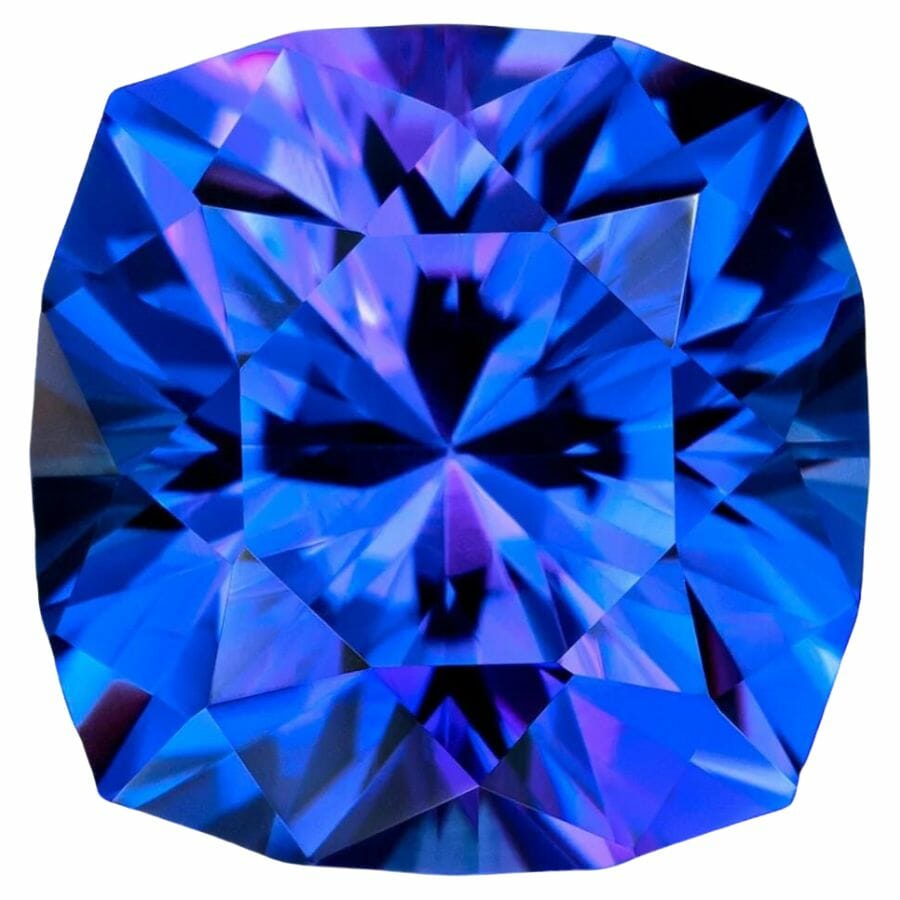
Clarity in geology refers to how clear a gemstone is or how free it is from internal inclusions or external blemishes. When we talk about “inclusions,” we’re referring to the tiny imperfections inside a gem. They can be small cracks or even little minerals that got trapped inside the gemstone as it was forming.
Sapphire, for example, often has inclusions that are visible to the naked eye.
In contrast, tanzanite usually has fewer inclusions. In fact, most tanzanites are “eye clean,” which means any inclusions are so small that they can’t be seen without magnification.
Colors – Sapphire is known for its deep blue color
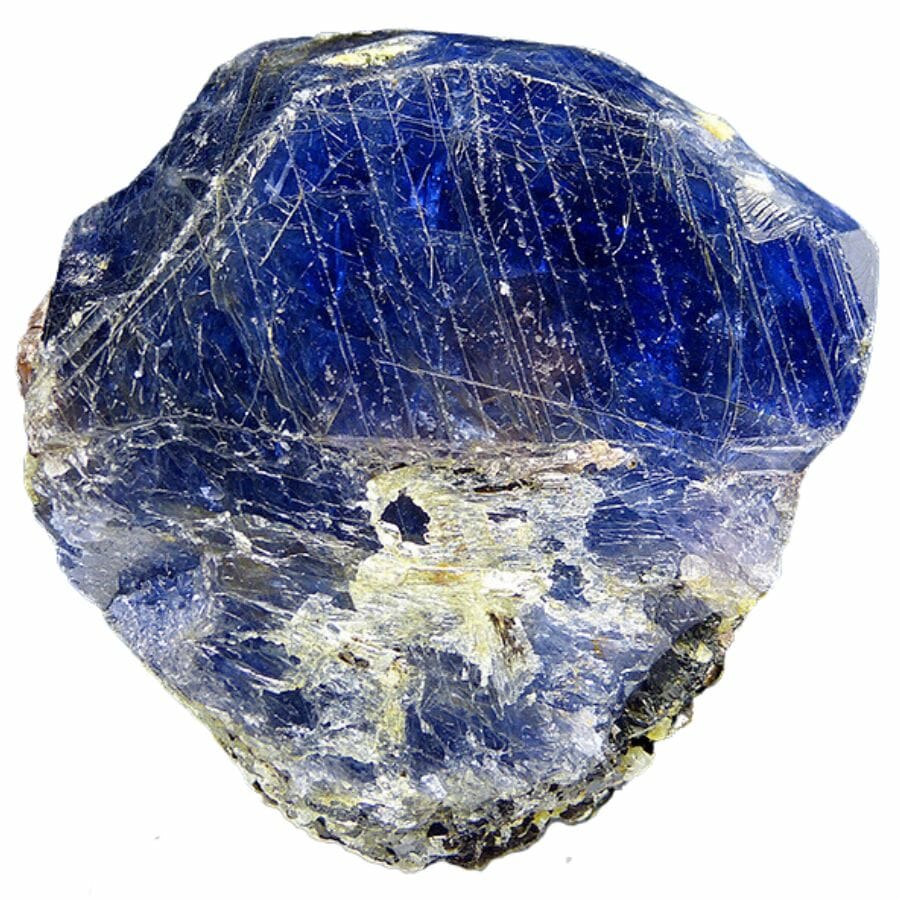
Tanzanite and sapphire are both known for their stunning blue hues, which can be quite similar to the untrained eye. However, each gem has its unique color characteristics that make it special.
Tanzanite is popular because it can exhibit three different colors when viewed from different angles. This quality is called trichroism. The blue color of tanzanite ranges from ultramarine to light violet-blue, but it also occurs in violet and burgundy.
The most in-demand tanzanite color is a deep blue with a slight hint of violet. It can be very similar to the blue color of sapphire.
Interestingly, tanzanite is naturally brown when it’s first mined. To bring out its stunning blue and violet hues, it’s carefully heat treated. This heat treatment transforms the gem into the vibrant stone we recognize and love.
Sapphire, on the other hand, is most commonly known for its blue color. However, it can come in a rainbow of other colors. It also appears in various colors like yellow, pink, green, and white, except for red, which is classified as ruby.
Check out other blue rocks, minerals, and gems to see what else the Earth has to offer!
Hardness – Tanzanite is softer than sapphire
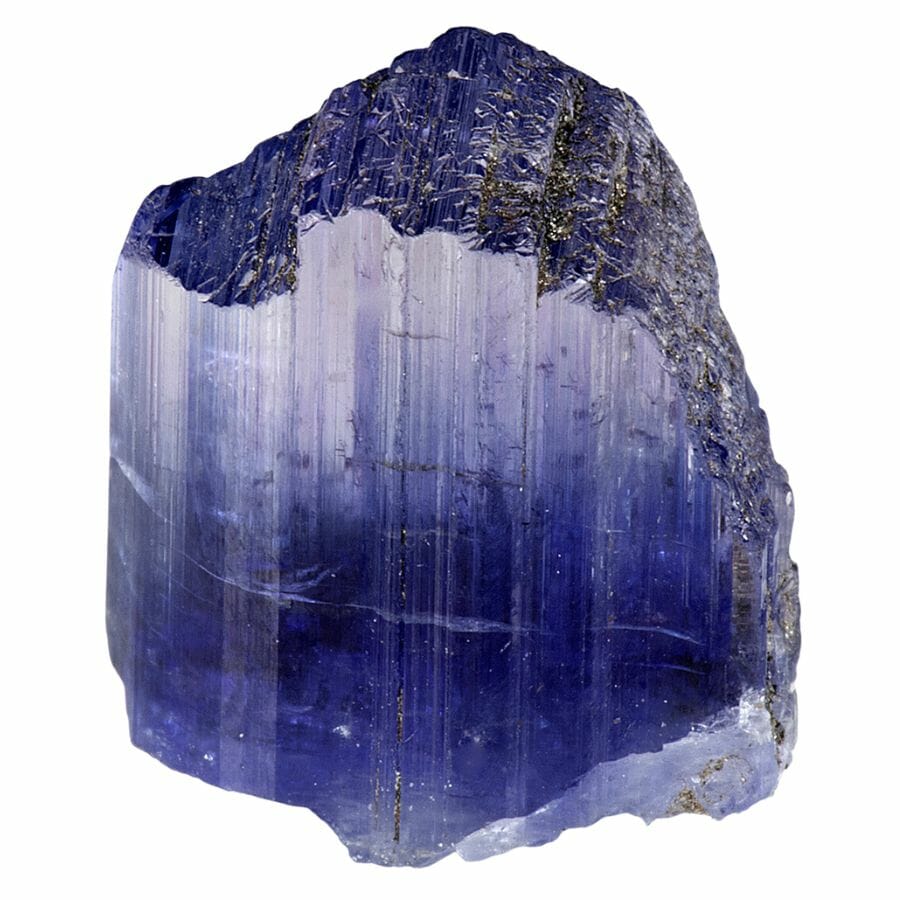
The hardness of a gemstone is a way to measure how resistant it is to scratches and wear. We use something called the Mohs Hardness Scale to measure this hardness.
This scale was invented by Friedrich Mohs in 1812, and it ranks minerals from 1 (very soft) to 10 (very hard). On this scale, the higher the number, the harder the mineral is.
Now, let’s talk about tanzanite and sapphire. Tanzanite, a beautiful blue and violet gemstone, has a hardness of 6.5 on the Mohs scale. This means it’s relatively soft when compared to other gems.
Because of this, tanzanite can get scratched or worn out if it’s not handled carefully.
On the other hand, sapphire is much harder. It scores 9 on the Mohs scale, making it one of the hardest minerals on Earth. This means that sapphire is extremely resistant to scratches and everyday wear and tear.
That’s why sapphire is a great choice for all kinds of jewelry. These include pieces you’d want to wear every day, like engagement rings.
So, while both tanzanite and sapphire are beautiful, their hardness is very different. This difference in hardness affects how and when you might want to wear jewelry made from these gemstones.
Crystal structure – Sapphire looks like prisms
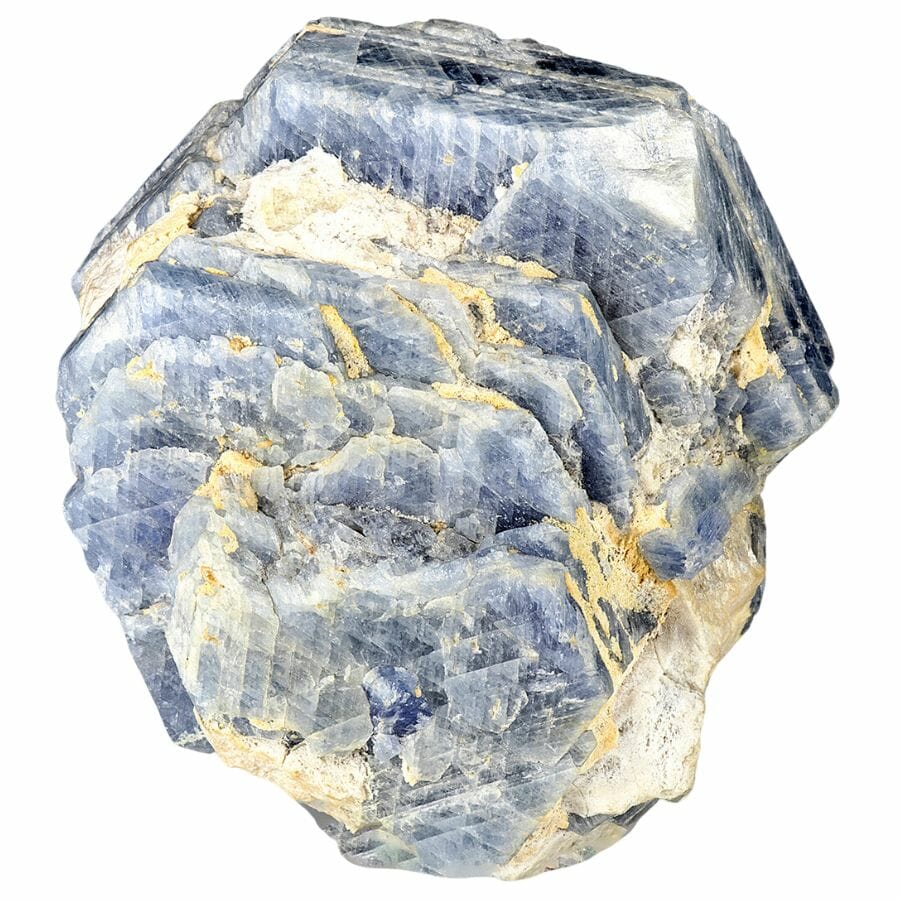
Crystal structure refers to the way that atoms are arranged in a crystal. The structure can affect how a mineral looks, how hard it is, and how it breaks. Tanzanite and sapphire may look alike, but they have very different crystal structures.
Tanzanite, a form of ziosite, has an orthorhombic crystal system. In this system, the crystal shapes are like imperfect cubes. All sides meet at right angles, but they’re not all the same length. Because of this, raw tanzanites tend to naturally appear like blocks.
The crystal formation also impacts the color display, as tanzanite shows different colors when viewed from different angles. Because of this, tanzanite tends to look like prisms.
On the other hand, sapphire belongs to the corundum family and has a hexagonal crystal system. In this structure, the crystals look like hexagons or six-sided prisms. Sapphire crystals look like prisms that taper down at the ends.
The structure also contributes to sapphire’s hardness and variety of colors.
So, even though tanzanite and sapphire can look somewhat similar to the untrained eye, their crystal structures are distinctly different. These differences impact not just the appearance, but also the properties and strength of the gemstones.
Cleavage – Tanzanite cleaves perfectly
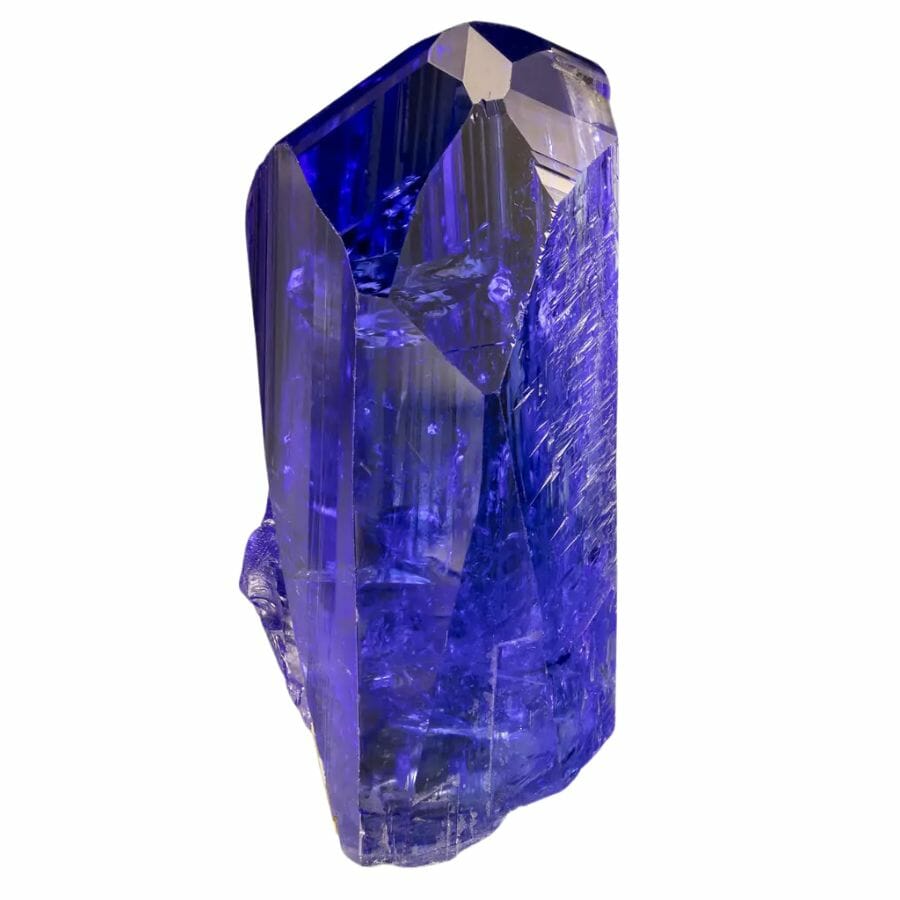
When we talk about minerals and gemstones, the term “cleavage” refers to the way a mineral breaks along its internal structure. This property is unique to each type of mineral and can be a helpful way to identify them.
Let’s look at tanzanite and sapphire. Tanzanite has perfect cleavage in one direction. That means it breaks very smoothly along one plane.
However, this feature makes tanzanite more delicate. It’s a bit tricky to cut into gems without breaking them.
On the flip side, sapphire, a variety of the mineral corundum, has no cleavage at all. It doesn’t break smoothly along any plane. Instead, it fractures in an uneven, or conchoidal, manner.
This property, combined with its hardness, makes sapphire less likely to break or chip.
So, the difference in cleavage between tanzanite and sapphire is quite significant. It affects how these gemstones are handled, cut, and ultimately used in jewelry.
Chemical composition – Sapphire has a simpler composition
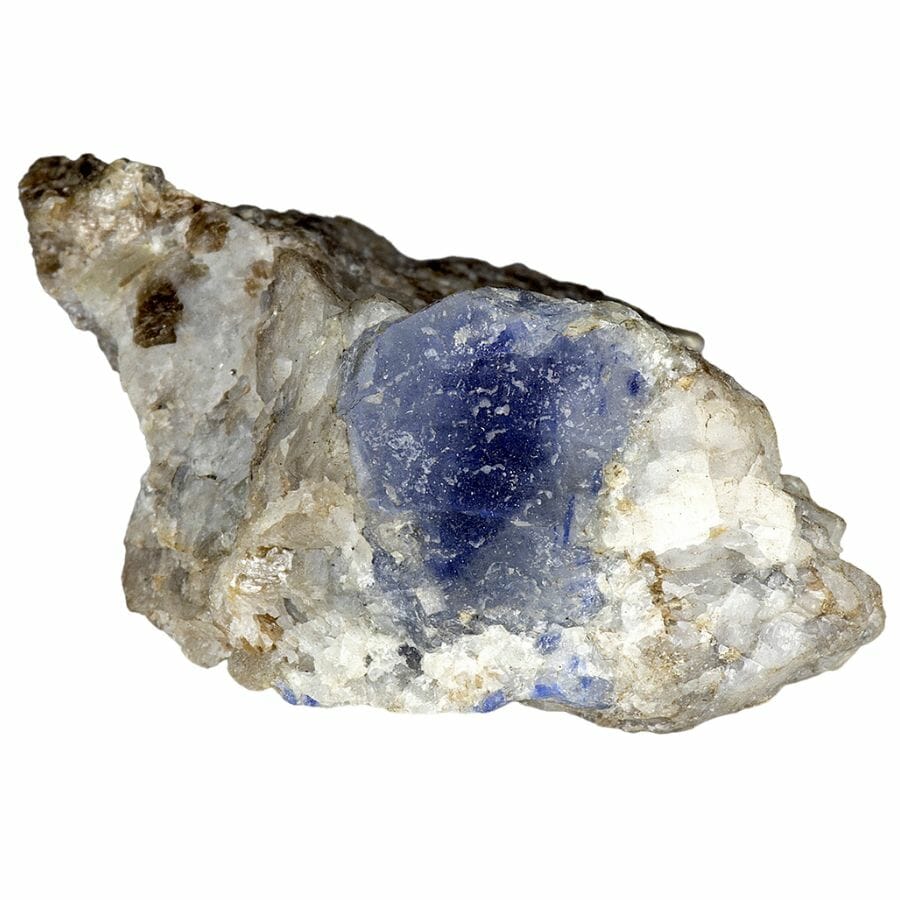
Chemical composition tells us what elements make up a mineral. Different minerals have different chemical compositions, which is what makes them unique.
Tanzanite, for example, is a form of zoisite, a silicate mineral. It’s composed of calcium, aluminum, silicon, oxygen, and hydrogen. These elements combine in a specific way to form tanzanite and give it its beautiful blue-violet color.
Sapphire, on the other hand, has a much simpler chemical composition. It’s made of just aluminum and oxygen.
Despite this simple formula, sapphires can have impurities or trace elements like iron or titanium. These elements can give sapphires their vibrant blue color.
So, even though tanzanite and sapphire look alike, they have very different chemical compositions. This gives them their unique colors and affects properties like hardness and cleavage.
Density – Tanzanite has a lower density
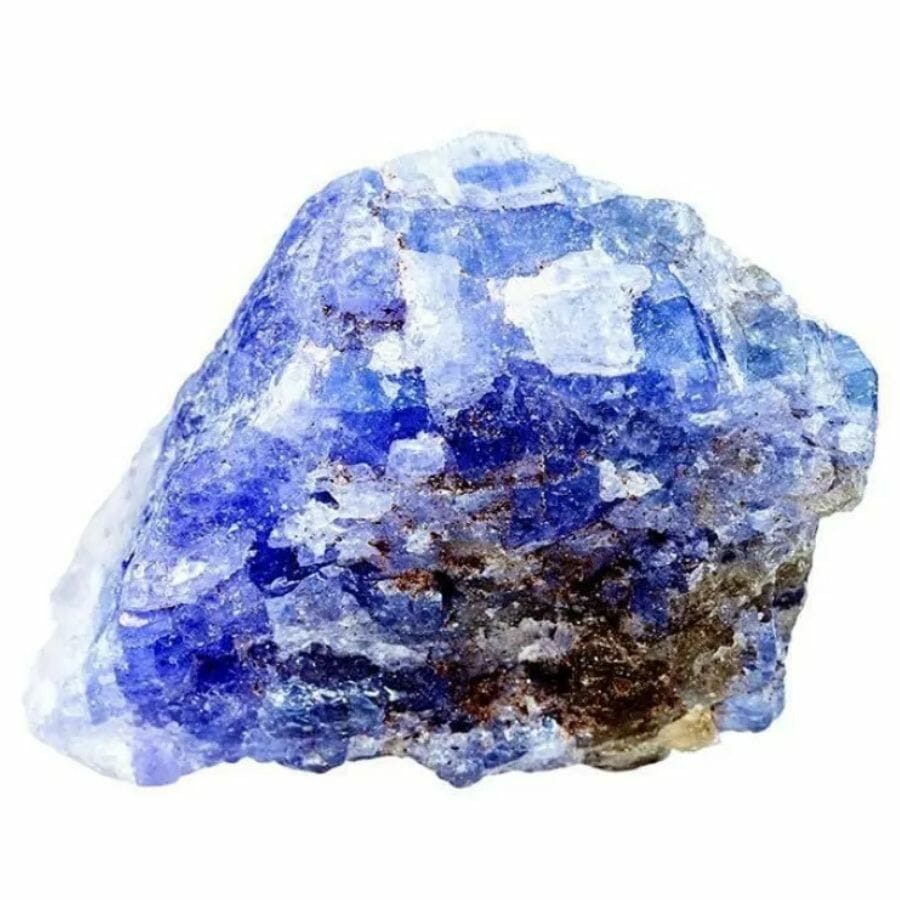
When we talk about density in terms of gemstones like tanzanite and sapphire, we’re referring to how much a certain volume of the gemstone weighs. It’s usually measured in grams per cubic centimeter (g/cm³).
Let’s start with tanzanite. This blue-violet gemstone has a density of around 3.35 grams per cubic centimeter.
Now, let’s compare that to sapphire. Sapphire has a higher density, which ranges from 3.95 to 4.03 grams per cubic centimeter.
The difference in density between tanzanite and sapphire might seem small, but it can be a big deal. Gemologists can use this difference to help them identify whether a gemstone is a tanzanite or a sapphire.
Formation – Sapphire can be found in metamorphic and igneous rocks
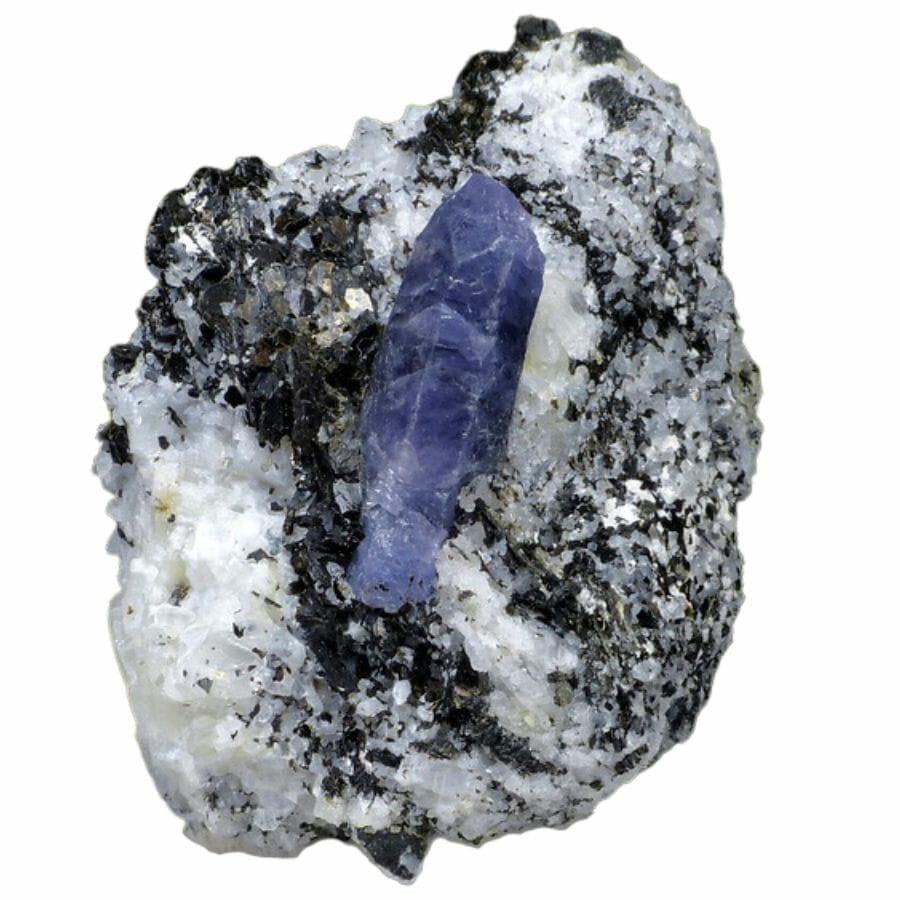
Tanzanite and sapphire are both stunning gemstones, but they are created in very different ways.
Tanzanite is formed in a type of metamorphic rock known as a “skarn.” Here’s what happens: deep within the Earth, metamorphic rocks are subject to intense heat and pressure. Over time, these conditions can cause the rocks to change, forming new minerals.
When limestone and shale are exposed to high temperatures and pressure, tanzanite forms. This process takes millions of years, and so far, it’s only been found to happen in one small part of the world.
Sapphire, however, forms in a wider variety of rock types, including both igneous and metamorphic rocks. The most precious sapphires are often found in igneous rocks. These are rocks formed from magma, or molten rock, which cools and solidifies.
Even though tanzanite and sapphire might look somewhat similar, they are formed in very different environments. It’s a great reminder of the amazing variety of processes that can occur deep within our planet!
Fluorescence – Tanzanite doesn’t glow under UV light
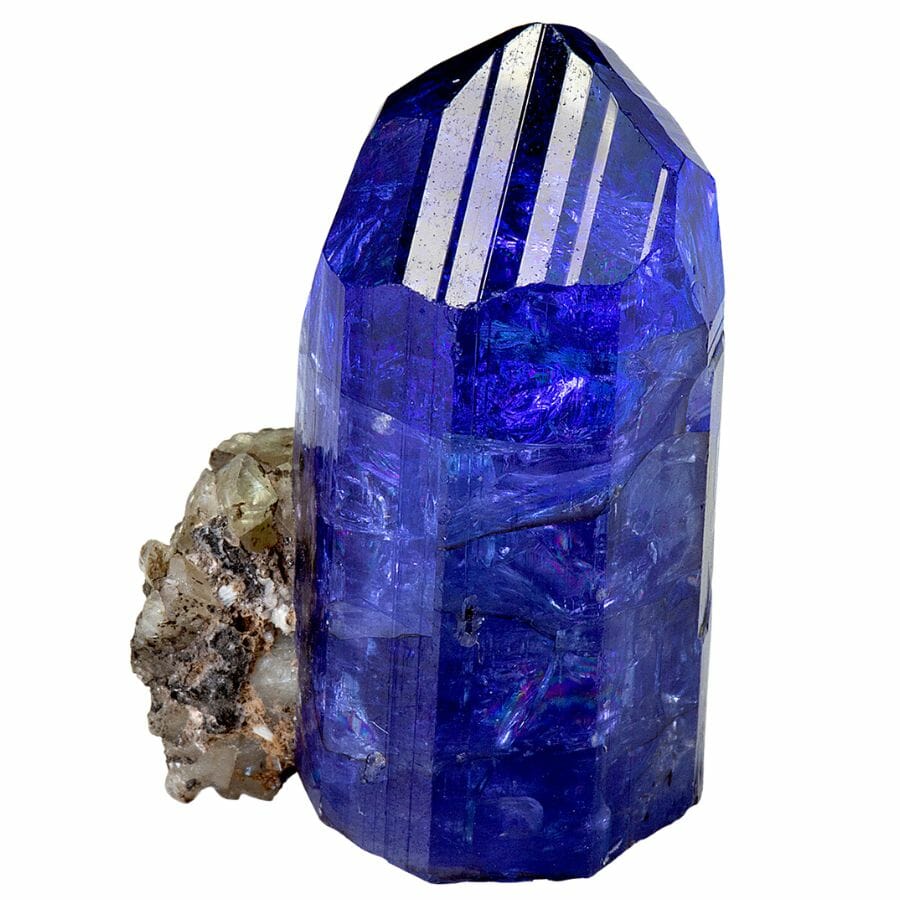
Fluorescence in gemstones is a fascinating phenomenon where the gem lights up or ‘glows’ when exposed to ultraviolet (UV) light. This glow comes from the way certain elements within the gem react when they are hit with UV light.
Tanzanite, despite its eye-catching blue-violet hue, usually doesn’t fluoresce. The elements that make up tanzanite don’t react in a way that produces this kind of glow.
Sapphires can fluoresce, but the strength and color of this fluorescence can vary based on several factors. These include the sapphire’s iron content, whether or not it has been heated, its color, and its chromium content.
Under long-wave UV light, sapphires can fluoresce if their iron content is low enough. Iron in sapphires can “quench” or reduce fluorescence, meaning sapphires with high iron content might not fluoresce as much.
However, even sapphires with iron can still fluoresce if it has chromium content.
Conductivity – Sapphire is a good conductor
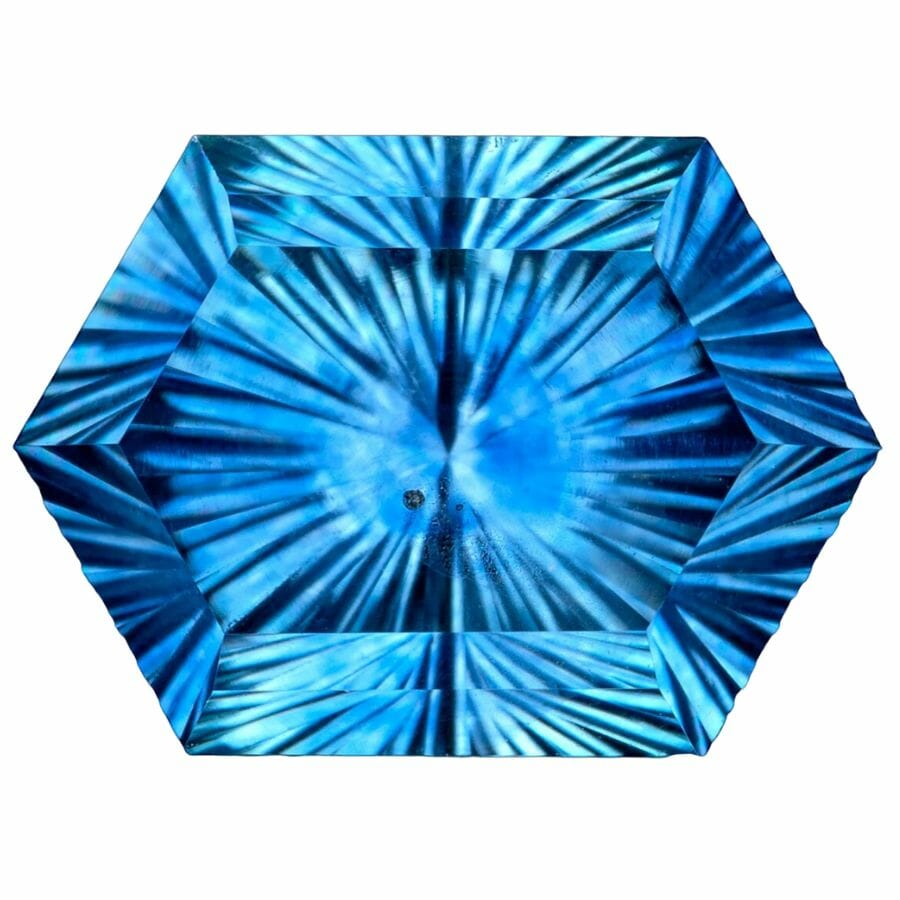
Thermal conductivity refers to how well a material can transfer heat. If something is a good thermal conductor, like metal, it allows heat to pass through it quickly. Electric conductivity, on the other hand, is how well a material can carry an electric current.
A good conductor is something that heat can move through easily, like metal. Surprisingly, sapphires are excellent thermal conductors! This means that if one end of a sapphire gets hot, the heat will quickly spread to the other end.
On the flip side, sapphires are excellent electrical insulators. An electrical insulator is a material that electricity can’t pass through. Just as rubber or plastic insulates electrical wires and keeps electricity from escaping, sapphire can do the same thing with electricity.
Location – Tanzanite can only be found in one place
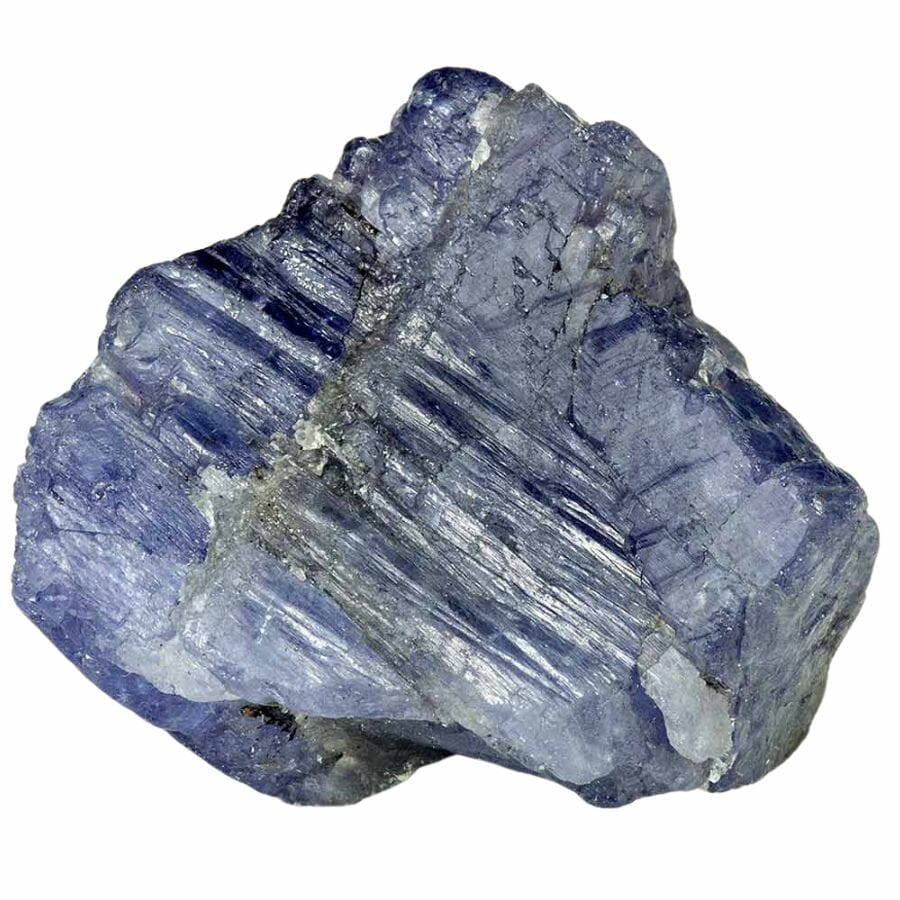
The location and method of finding gemstones like tanzanite and sapphire can be as fascinating as the gems themselves. If you’re interested in finding some yourself check out our local guides for finding gems near you.
Tanzanite is found in only one place in the world: the Merelani Hills of Tanzania, near Mount Kilimanjaro. This makes tanzanite quite rare.
Sapphire, on the other hand, is found in a wider range of locations around the world. The best places to find sapphire include Myanmar, Sri Lanka, and Australia. The stone has also been found in places like Montana in the United States.
Price – Sapphire is more expensive
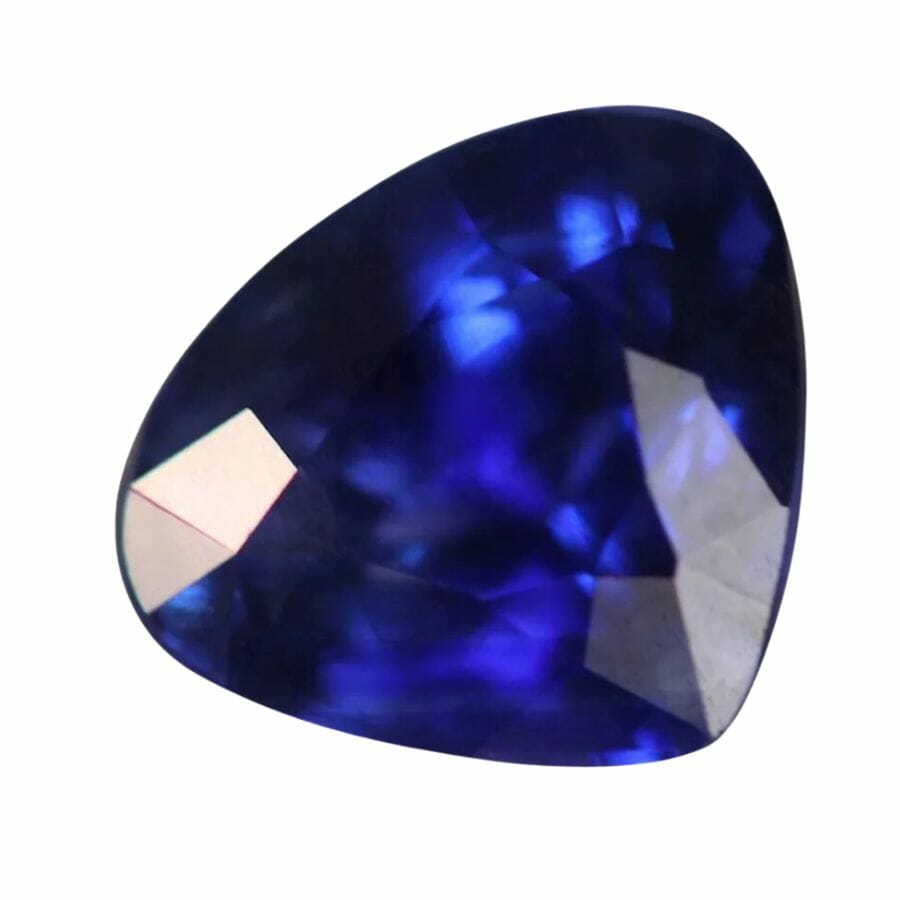
Though sapphire and tanzanite are beloved gemstones, can have different price tags. The reasons behind this lie in their rarity, quality, and sourcing locations.
The price of sapphire can get quite hefty, particularly when it comes to pieces of superior quality.
The most expensive ones are the Kashmir and Burmese sapphires. Their deep, intense blue color combined with their rarity drives their price up.
On the other hand, tanzanite is a unique gemstone because it is sourced from only one place in the world. Despite its singular source, tanzanite is generally more affordable than sapphire.
The quality of the stone also impacts the price. Higher-quality sapphire and tanzanite are of course more expensive. If the stone has better color, better clarity, and larger size, it will generally command higher prices.
Another aspect to consider is treatment. Heat-treated sapphire is usually more expensive than unheated sapphire.
Sapphire vs Tanzanite – The Similarities
Now that we’ve looked at the difference between sapphire and tanzanite, let’s see what they have in common. By learning how the two stones are alike, we can more easily recognize their differences.
Luster – Both have a glass-like shine
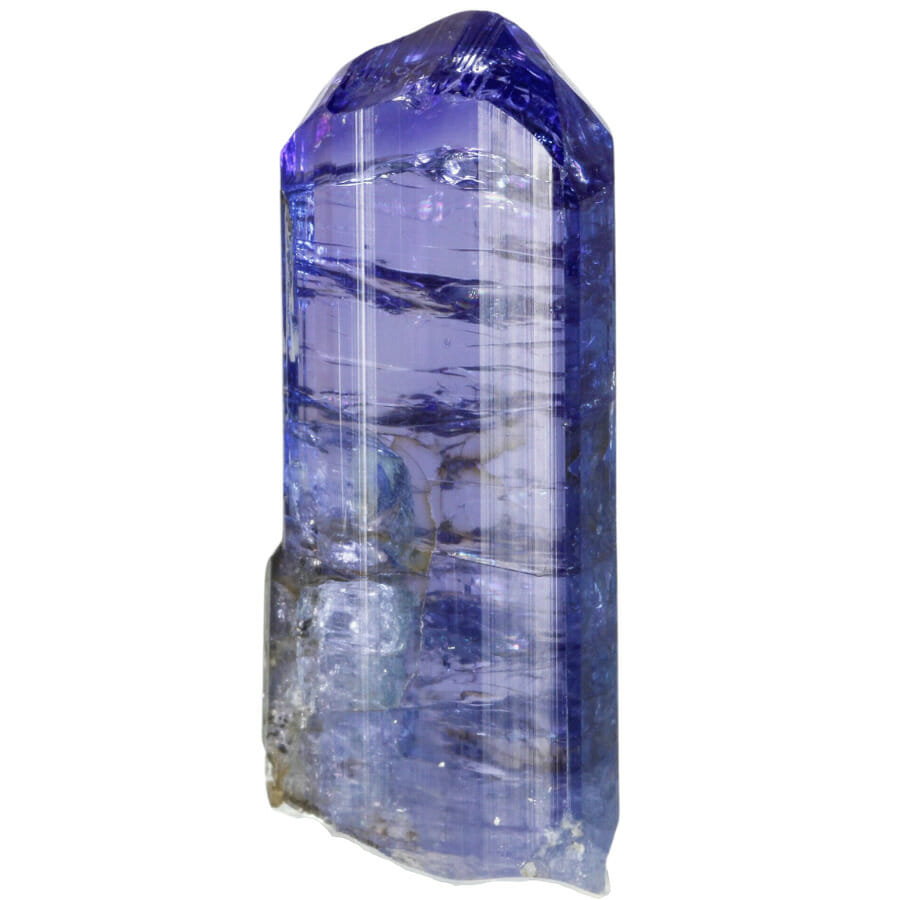
When we talk about the luster of a gemstone, we’re referring to the way it interacts with light, or how it shines. Both tanzanite and sapphire share a similar type of luster, which contributes to their appeal and beauty.
Tanzanite and sapphire are prized for their vitreous luster. “Vitreous” means glass-like. So, these gemstones have a luster that looks like the surface of a piece of glass. When light hits these gemstones, they reflect it in a way that makes them gleam, which is a big part of their appeal.
The degree of this luster can be influenced by how the gemstones are cut and polished. A well-cut and well-polished gem can better reflect light, enhancing its natural luster and making it more beautiful to look at.
Streak – Neither mineral leaves a colored streak
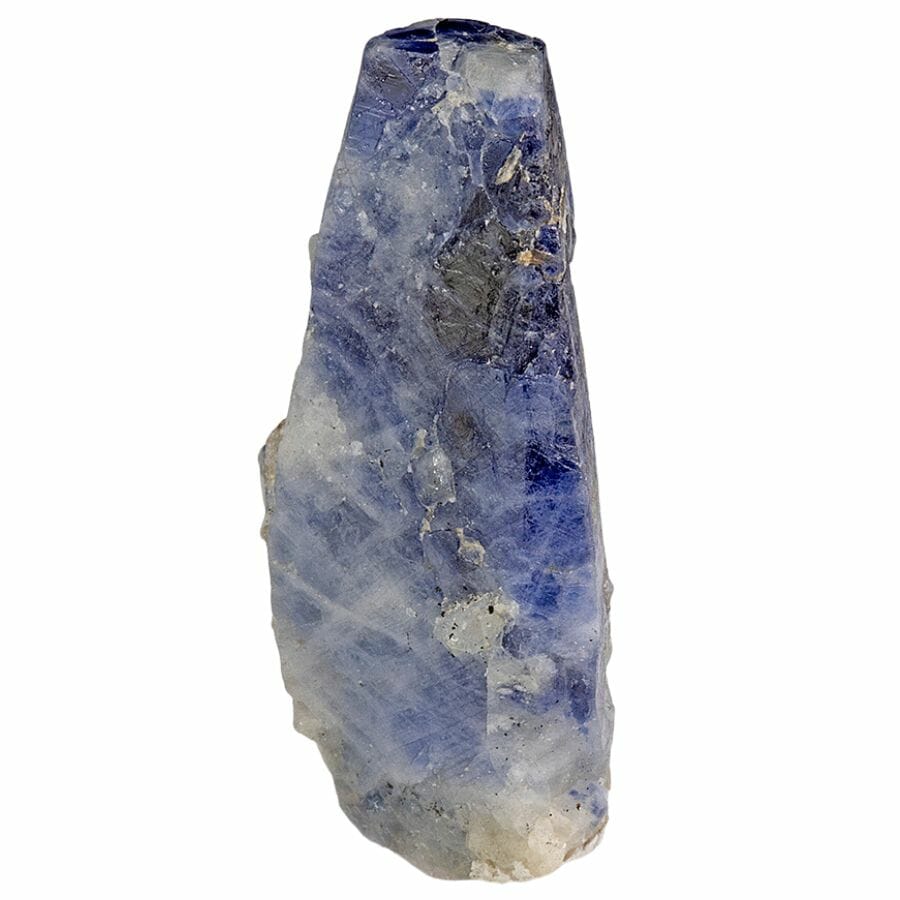
In the world of minerals and gemstones, the term “streak” refers to the color of the mineral when it is crushed to a powder. This can be tested by scratching the mineral across an unglazed porcelain plate, also known as a streak plate.
The streak test isn’t commonly used for tanzanite and sapphire. This is because both of these gemstones are harder than the streak plate itself. They would scratch the plate instead of the other way around.
Magnetism – They have no magnetic properties
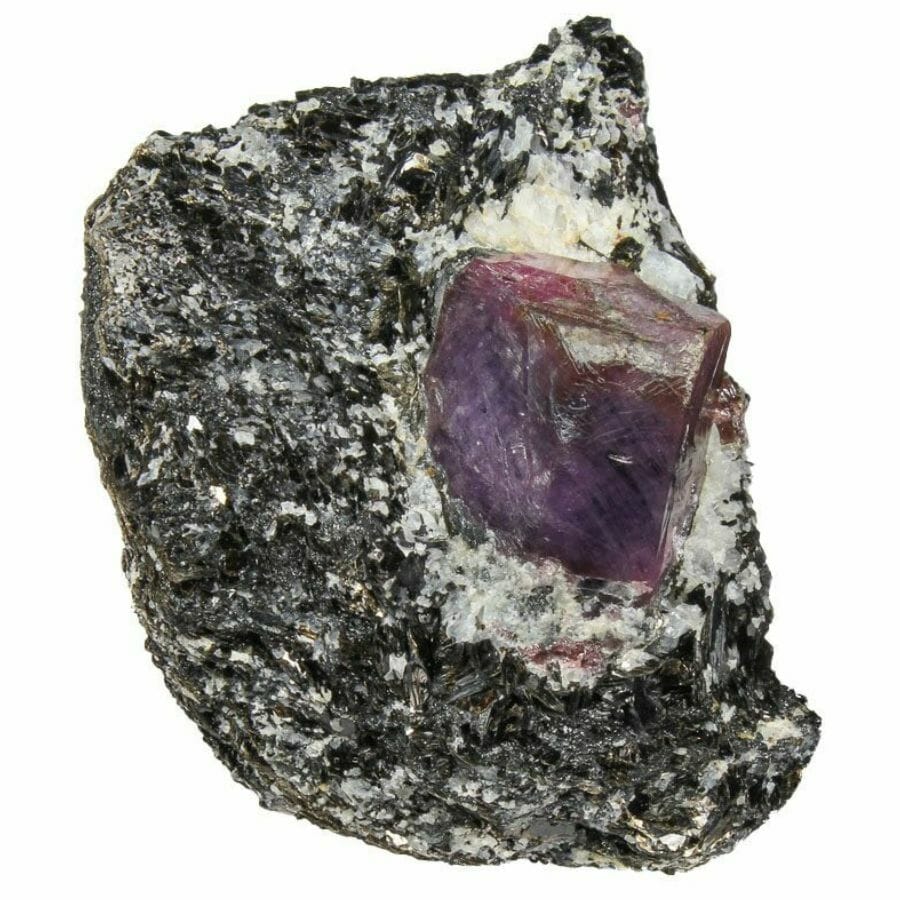
In the world of gemstones, some minerals have magnetic properties, meaning they’re attracted to magnets. However, that’s not the case for all minerals, and tanzanite and sapphire are two examples.
Neither tanzanite nor sapphire has significant magnetic properties as they do not contain elements that can be magnetized.
The Easiest Ways to Tell Tanzanite and Sapphire Apart
It’s easy to confuse tanzanite and sapphire. However, there are several key differences between them that can help in identifying them correctly. You can also use these tips when out in the field in one of the best rockhounding locations if you have a penchant for exploring.
Scratch it with a masonry drill bit
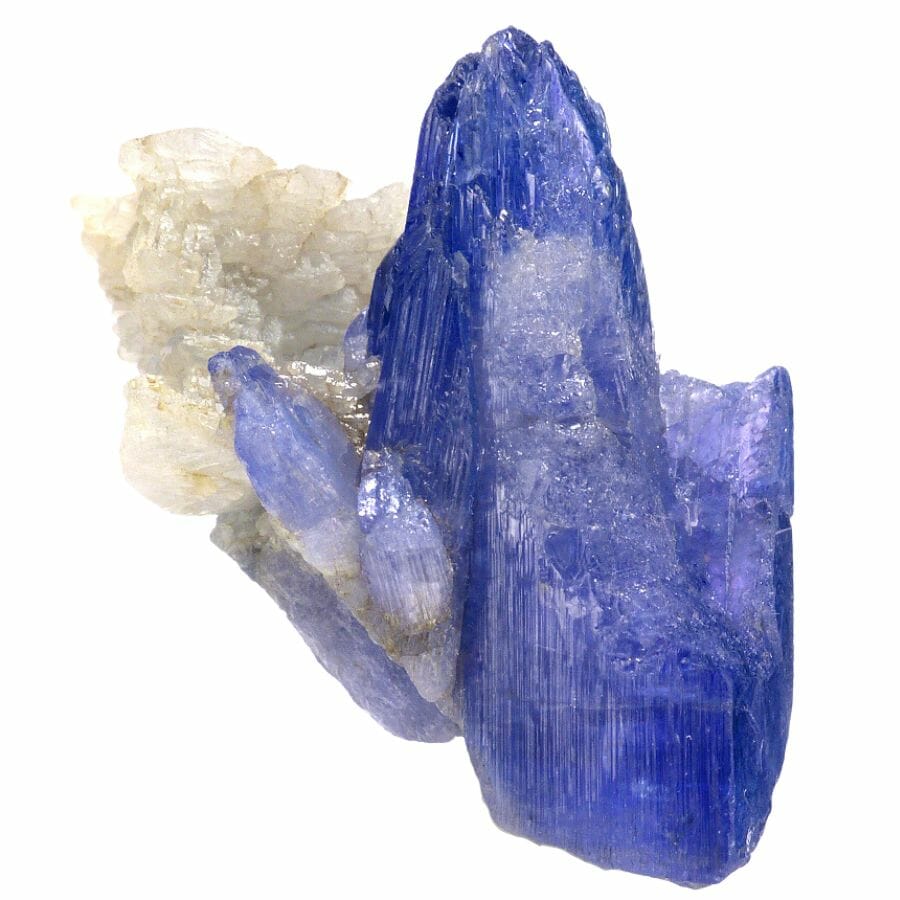
Tanzanite is significantly softer than sapphire and is also more likely to chip. Because sapphire is one of the hardest minerals on the planet, only a diamond can scratch it.
However, if you have a masonry drill bit with a tungsten carbide tip lying around, you can use it for a scratch test. Tungsten carbide has a score of 9 on the Mohs scale and is slightly harder than sapphire. It’s also much harder than tanzanite.
Now, consider a blue stone that you suspect could be either tanzanite or sapphire. If you were to gently try to scratch it with a tungsten carbide-tipped drill bit, one of two things could happen. If the stone is a sapphire, the drill bit would hardly scratch it since they have similar hardness.
But, if the stone is tanzanite, which is softer, the drill bit would leave a mark.
Examine it under fluorescent and incandescent light
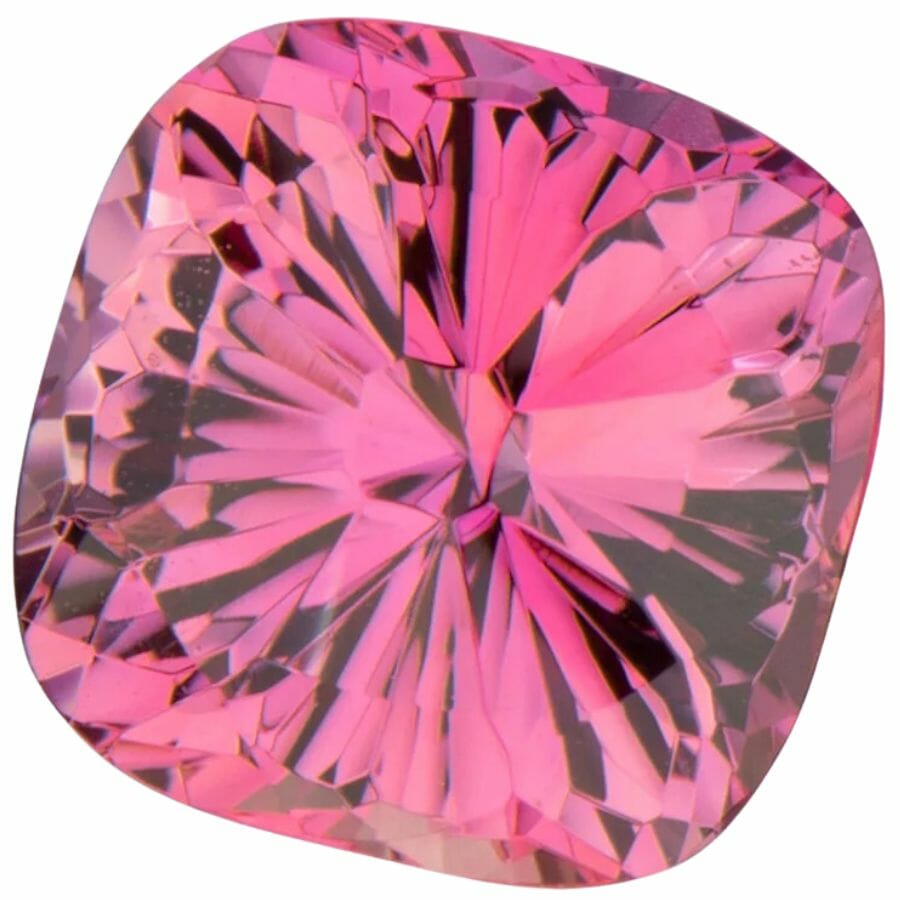
If you don’t want to subject the stone you have to the scratch test, you can try looking at it under fluorescent and incandescent light.
One of the most noticeable changes occurs when tanzanite is viewed under fluorescent light versus incandescent light. Have you ever noticed how some lights in your house or school seem to be a little more blue, while others feel warmer and more yellow or red? These are examples of fluorescent and incandescent lighting.
When you place tanzanite under fluorescent light, which is a cooler, bluer light, the gemstone tends to display more of a blue color. This blue is vibrant and can be very eye-catching, giving the tanzanite a fresh and cool appearance.
But when you switch to incandescent light, which is a warmer, more yellow or red light, something amazing happens. The tanzanite starts to show off more of a violet color. This violet hue can be quite rich and deep, giving the gemstone a more intense and dramatic look.
However, color change sapphires can also change their color under different types of light. These sapphires appear more violet than blue under fluorescent and LED light. They can also look more reddish purple under an incandescent light source.

